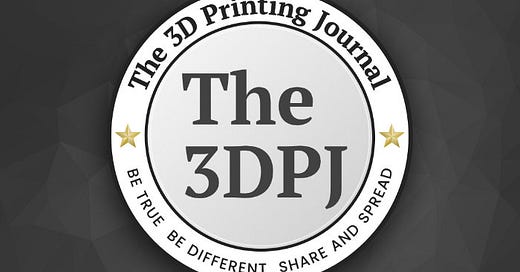Next week Raise3D will announce the launch of its first SLS 3D printer!
The Atomic Layers: S9E4 (00241)
Atomic Layer of the Day:
For those who don’t know – selected companies send press releases in advance (sometimes several days or even weeks ahead) with a note that the information is under embargo until a specific date. But every now and then, even the most careful editorial team makes that awkward mistake and publishes a news piece ahead of schedule…
Today, the German outlet 3Druck informed us that next week, during Rapid + TCT 2025 in Detroit, it will unveil its first SLS 3D printer – the Raise3D RMS220.
To mark the company’s tenth anniversary, Raise3D presented two new additive manufacturing systems at Rapid + TCT 2025 in Detroit: the RMS220 SLS system and the enhanced DF2+ DLP resintering platform. The company is thus pursuing its course of addressing industrial applications with scalable, integrated manufacturing solutions.
Interestingly, the machine was already showcased a month ago at TCT Asia, but that news didn’t really break through into Western AM media (CLICK HERE TO SEE IT).
The company is also presenting the 3D printer on the Chinese version of its website (CLICK HERE TO SEE IT).
So, what do we know about the RMS220? The 3D printer uses SLS technology developed by Raise3D. One of its standout features is an advanced laser system. It’s equipped with a 75W (1064 nm) laser and an industrial-grade galvanometer scanner capable of scan speeds up to 30,000 mm/s. This enables the machine to reach impressive throughput—around 2.2 liters per hour at 20% fill density.
The build volume is 220 x 220 x 350 mm, giving a total of roughly 17 liters, placing it among the larger machines in the entry-level SLS 3D printer segment.
The RMS220 includes a unique, removable forming module that allows for material swaps in just 45 minutes—Raise3D claims this is three times faster than traditional SLS systems. Additionally, RFID technology automatically identifies and configures powders in use, reducing the risk of errors or cross-contamination. The machine also boasts a compact footprint of just 0.58 m².
The printer supports traditional powder materials like PA12, PA11, and TPU. It reaches its working temperature in just 20 minutes, and once a print is complete, the forming module can cool to below 100°C in 30 minutes, enabling a quick turnaround for the next job.
The 3D printer is expected to hit the market in Q2 2025. Pricing has not yet been announced.
Who should be worried about this Raise3D printer? Definitely Formlabs—beyond Sinterit, they have little to no competition in this segment. And certainly Sinterit itself, which may find this to be an existential threat over time.
And the fact that a Chinese company is the first to enter the low-entry SLS space? That can only mean one thing: others will follow soon. The usual suspects—FlashForge, Creality, maybe even Anycubic?
For now, the only good news for Formlabs is that SLS Raise3D printer—or any other Chinese printer for that matter—will likely cost +50% more in the U.S. than in other countries. Unless the tariff war ends by September…?
Atomic Layer from the Past:
04-04-2016: Vyomesh Joshi was appointed CEO of 3D Systems.
‘2013 in AM’ - brand new history book! GET IT NOW!
News & Gossip:
Polish 3D Lab, in partnership with Additive Plus, unveiled its fourth-gen ATO ULTRA FREQUENCY SYSTEM, optimized for fine metal powders (25 µm avg.) for additive manufacturing. The upgraded ATO Cast furnace and ATO Sieve complete the suite, enabling high-purity, recyclable powders for aerospace, medical, and industrial use. Enhanced ultrasonic atomization ensures superior PSD and flowability, supporting LPBF and MIM applications.
Fieldmade's mobile NOMAD03 micro-factory can now 3D print aluminum parts using Equispheres' NExP-1 non-explosive powder, enabling rapid, high-quality production in remote locations. Ideal for defense and energy sectors, the system cuts logistics costs and wait times. Final testing is underway, with availability expected by summer 2025.
Bambu Lab introduced Filametrics, a new web-based tool for organizing filaments and managing 3D printing projects. The alpha-stage software features real-time material tracking, Kanban-style project workflows, and a catalog system. Future updates may include automated usage tracking and RFID support. Basic features will be free, with advanced analytics as paid upgrades.





